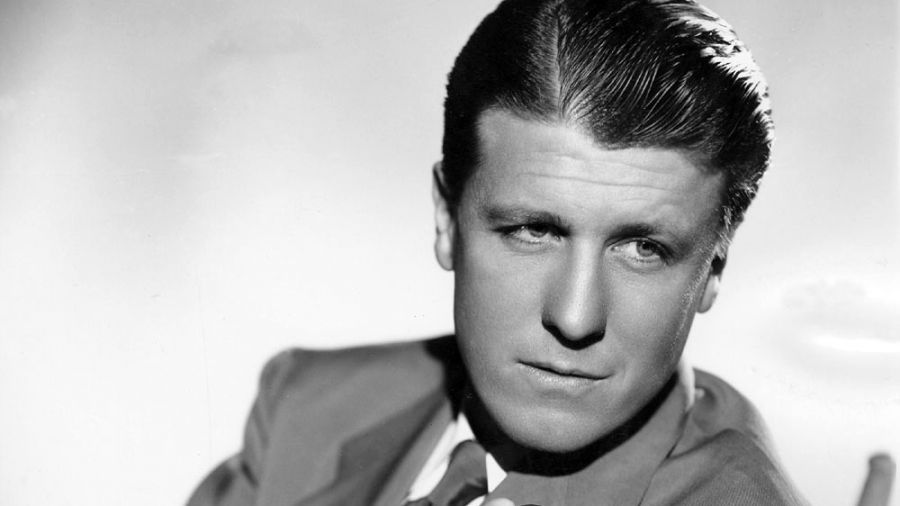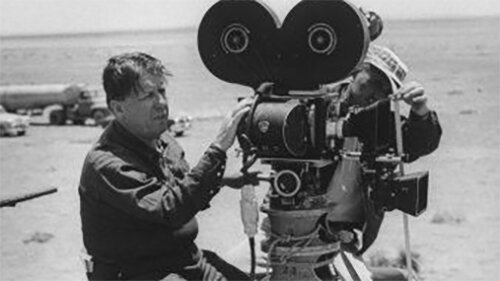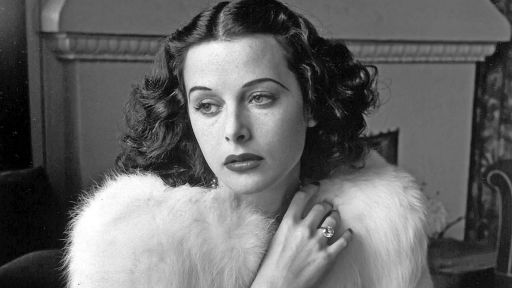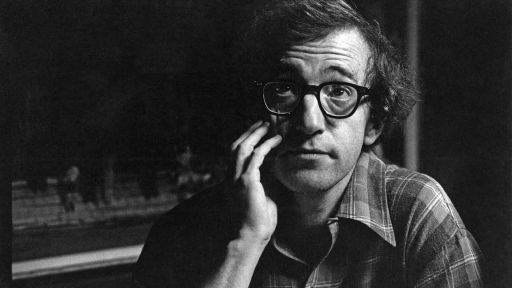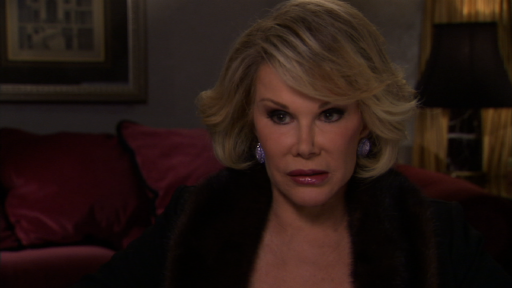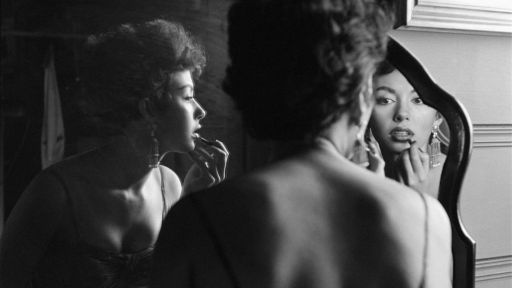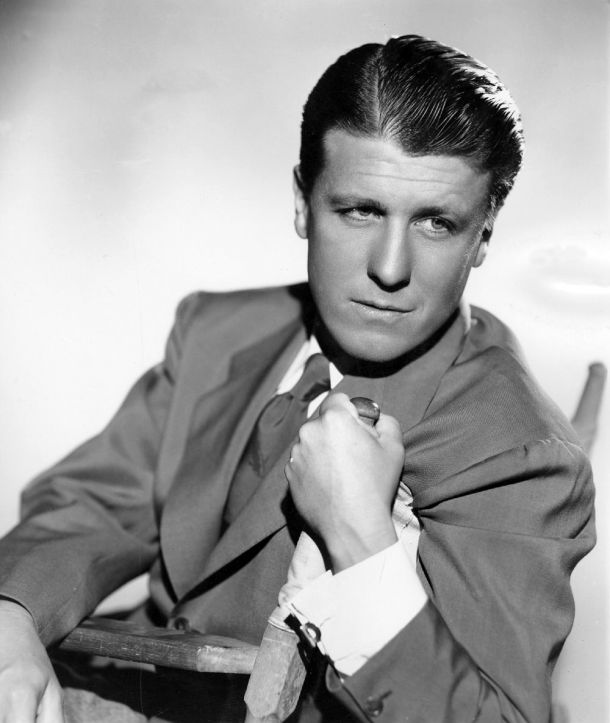
George Stevens
by Paul Cronin
This essay first appeared in the book “GEORGE STEVENS: INTERVIEWS”
At first glance, George Stevens appears to be the quintessential Hollywood director. But a closer look at his achievements shows him to be much more than just the creator of some of the smartest melodramas and screwball comedies of the 1930s and 1940s, and several of the most important and enduring studio dramas of postwar American cinema. As a leading producer/director of his era, Stevens repeatedly pushed against the Hollywood grain, and nearly twenty-five years after his death, his achievements remain largely unexplored.
A man of the West – he was born in Oakland, California – Stevens’ formal education was abandoned when he became an actor and later a stage manager in his parents’ West Coast touring stock theater company. (Though very intelligent and extremely well-read, Stevens’ spelling was notoriously bad.) At the point when it became clear that cinema was replacing live theater as the American public’s entertainment of choice, Landers and Georgie Stevens moved south to Los Angeles with their son. It was here, at the age of seventeen, where Stevens became an assistant cameraman at the Hal Roach Studios, cutting his teeth on a series of Westerns, many of which featured real cowboys. As James Silke explains in his introduction to his 1964 interview included in this volume, “The city boy went outdoors and learned to ride, rope and climb mountains. The young Stevens thrived on the new life and experiences that opened up for him to explore.”
Within three years Stevens, who trained under the tutelage of cinematographer Floyd Jackman, had started work on the first of dozens of classic Laurel and Hardy shorts as a cameraman and gagman (he also shot many of the Our Gang and Harry Langdon comedies). After having solved the problem of Stan Laurel’s blue eyes which did not adequately register on orthochromatic film stock (Stevens suggested panchromatic film be used instead), Roach decided to give the enterprising young man his first opportunity to direct. The result was the 1930 short “Ladies Last.” After moving to RKO in 1933, Stevens started work on a series of highly regarded light-hearted feature entertainments, including one of the first Fred Astaire and Ginger Rogers musicals, and the classic adventure yarn “Gunga Din.”
By the time he went to war in 1943, Stevens also had the first pairing of Katharine Hepburn and Spencer Tracy under his belt with “Woman of the Year,” and the Cary Grant comedy The “Talk of the Town.” While in Europe, moving with the Allies from D-Day through to the battle for Berlin as the commander of a group of writers and cameramen (which included William Saroyan, Irwin Shaw, Ivan Moffat, who worked on the script “Giant,” and William Mellor, who would win Oscars shooting “A Place in the Sun” and “The Diary of Anne Frank”), Stevens used his own 16mm camera to shoot some unique color footage. This includes sequences at the liberation of Paris, the meeting of Russian and American troops at Germany’s river Elbe in April 1945, and the entry of American troops into Dachau concentration camp in southern Germany. As several of the conversations in this book suggest, Stevens’ wartime experiences had a profound effect on him. “It must have changed my outlook entirely,” he told James Silke in 1964. “Films were very much less important to me.”
Consequently, Stevens’ films underwent something of a sea change on his return from Europe. Between 1951 and 1956 He produced his “American Trilogy,” three films that are more sober and, as several critics have suggested, thought-provoking than the pre-war work. “A Place in the Sun” (which, writes Donald Richie, expresses the ‘attitude of the mature artist’), “Shane” (a film that Edward Countryman and Evonne von Heussen-Countryman note ‘considers violence where there is no law, both in terms of what a shooting does and as a historical problem in America’s development’), and “Giant” (the epic that, as critic Richard Schickel noted recently, caused many think differently about America’s racial problems) solidified Stevens’ international reputation as a director of quality American drama. His final films, which include “The Diary of Anne Frank,” certainly influenced by his experiences at Dachau, and “The Greatest Story Ever Told,” the epic re-telling of the life of Jesus, were a fitting end to a career during which he earned two Academy Awards for Best Director, and numerous other nominations and awards.
Stevens’ training at the hands of figures like Hal Roach meant that by the time he was given the opportunity to direct himself, he had a wealth of technical experience to draw from. Edgardo Cozarinsky writes in Richard Roud’s Cinema: A Critical Dictionary that Stevens “can be seen ‘doing something’ with every scene of his major films.” Yet nearly thirty years after his death, Stevens remains a relatively ignored figure in American film history. Even though many cinemagoers know his work, most would be hard pushed to name the director of “Shane” and “Giant.” One reason for this is perhaps due to a certain snobbishness on the part of film scholars. Unlike figures such as Nicholas Ray, Alfred Hitchcock and Howard Hawks, Stevens was never heralded as an auteur and paraded across the pages of French film magazines in the 1950s and 60s by the critics of that country. But in several crucial respects, Stevens can most definitely be considered as the ‘author’ (or at least, one of the authors) of his films.
A look at his body of work reveals Stevens’ filmmaking strategy over his forty year career: quality over quantity. Unlike many of his Hollywood contemporaries, some of whom produced a film a year (and sometimes even more than that), Stevens always spent lengthy periods of pre-production working with his writers on the screenplays of his films, a process that can be documented as early as Alice Adams in 1935. As Stevens tells Mary Anne Fisher in her 1963 interview, “For me it’s absolutely necessary to start from the very beginning. I can’t think of coming and contributing something anywhere along the line other than the very start… The ‘auteur’ concept is certainly the most desirable form of filmmaking, from my point of view.” Antonio Vellani, producer of “The Greatest Story Ever Told,” was present at numerous script conferences over a period of several years. For Vellani, Stevens “was primarily a writer, with an extraordinary control of the craft of screenwriting.” In fact, as Stevens’ interview at the American Film Institute with James Silke makes clear, on at least one film he was writing as the same time as shooting, injecting a vibrant improvisatory nature to some of his work (an influence, perhaps, from his work with Laurel and Hardy), though as Edward Countryman and Evonne von Heussen-Countryman make clear, this was “much more the product of knowing where he wanted to take the film before he started shooting than of simply making it up as he went along.”
As well as contributing to the writing process, Stevens often did extensive historical research for his films himself during pre-production. “I’ve always been of the opinion that a director should never touch a film without his having a basic knowledge of its contents,” he explains to William Kirschner in 1963. As such, as he goes on to explain, Stevens worked with a former member of the Dutch resistance during pre-production, and spent considerable time with Otto Frank, father of Anne, in the Amsterdam apartment where the Frank family hid from the Nazis, all to ensure that “The Diary of Anne Frank” was as true to reality as possible. When talking about “The Greatest Story Ever Told” with Bruce Petri in 1973, Stevens notes that “There is enormous responsibility involved in the subject matter. I wouldn’t have felt comfortable in going into the production of the film without the kind of study we did. Not only historic study, but more importantly Gospel studies. We had to approach our research with humility, reverence and a good deal of energy.” As a consequence, Stevens spent three years active researching before shooting a feet of film, including a lengthy visit to Israel in 1962. Stevens even hired a technical advisor for “Shane” who gave notes about everything from the costumes to the eating habits of the characters. “I believe that if you make a film properly today, it’ll be watched by people in fifty years time,” Stevens explains to Bruce Petri. “These pictures are around for a long while,” he told the Los Angeles Times in 1955. “We want them to be good.”
More evidence for Stevens’ authorial status comes from the fact that he was vehement that the film director retain control of his work and be able to affect every element of a film’s production. Always anxious to assert his rights as a director, something he did no matter whose feathers were ruffled in the process, Stevens did not hesitate to ensure he had absolutely everything he needed in order to end up with precisely the film he wanted. Much to the chagrin of his producers, his technique – the result of what has been called his ‘laborious perfectionism’ – was to obtain coverage of a scene from every conceivable angle which – as William Mellor noted – meant that Stevens’ editing rooms were full of “about three times the usual amount of film.” But it also gave Stevens as many options as possible when editing, a process he was usually directly involved in.
Moreover, Stevens was one of the first major producer/directors in Hollywood. His contract with Liberty Films, the company he established in 1945 with fellow directors William Wyler and Frank Capra, gave him ‘full autonomy’ in his filmmaking, including ‘the right to edit, cut and score’ his work as he saw fit. As Gene D. Phillips explains, the eventual failure of Liberty Films (the company was disbanded after producing only one film, Capra’s It’s a Wonderful Life) was due to Stevens, Wyler and Capra being too ahead of their time, and though the company prefigured the independent movement in American cinema that exploded in the 1960s, in the 1940s “it was still a bit too early for Hollywood to accept fully the concept of independent production companies, since the studio system would remain in its heyday until the early 1950s.” Of his friend, Fred Zinnemann has said: “To the young members of the Directors Guild who were idealists and who wanted to make good films, George was a sort of Pope, or certainly a Cardinal. He was one of the few people who could stand up to the front office. We all learned that we could have some measure of success if we didn’t give up. Nobody at the studios took film seriously as a creative medium. George was one of the people who instilled in the studios that film was more than that.”
At one point during production on Shane he was requested by the Production Code Adminstration to tone down the killing of Torrey (Elisha Cook Jr.). Stevens gave his audience no quarter by rigging Cook Jr. up to a block and pulley system, which meant that when hit by the bullet from Jack Wilson’s gun (played by Jack Palance), his entire body flies backwards into the mud. For Stevens, the scene played a crucial role within the story a whole, one intimately linked to what he talks to both Robert Hughes and Joe Hyams about in their conversations included here. “You know, the one thing I wanted to do with “Shane,”” he explains to Hughes, “was to show if you point a .45 at a man and pull the trigger, you destroy an upright figure.” Needless to say, Stevens ensured that the scene passed the censors’ eyes without alteration. And in a well publicized case, Steven sued Paramount and NBC in 1965 when the television station planned to screen A Place in the Sun with commercial breaks, and in what he saw as ‘a distorted, truncated and segmented version.’ NBC, argued Stevens at the time, had replaced the film’s dissolves with fades “at the expense of the artistic integrity, the mood, effect and continuity of the film…It’s like taking the cadenza out of concerto.” His court case became something of a cause celebre, and as The New York Times noted in May 1966, led a group of influential Hollywood directors ‘to launch a vigorous counterattack in their campaign to reduce or eliminate commercial interruptions from motion pictures shown on television.’
“I have brought this action,” explained Stevens (as quoted in Variety), “not only because of its significance as applied to the specific picture involved, but also because I think the issue is vital to all filmmakers and one of key importance to the general public. I believe that, with respect to a film which has been accorded the attention and acclaim of a vast audience, the film itself is entitled to receive, and the public to enjoy, the same integrity in its presentation which led to its original acceptance.” In the same statement, issued at the time Stevens filed his complaint, he makes explicit reference to the ‘dollar and cents conjecture’ that he discusses with Mary Ann Fisher in this volume. “A motion picture should be respected as being more than a tool for selling soap, toothpaste, deodorant, used cars, beer and the whole gamut of products advertised on television,” he told Fisher. “The audience too should be respected by being presented with a film as they remember it, and for those who have not seen it, as it was intended to be seen. Anything less is a degradation of the film and its audience.”
Though much of his filmography reads as a list of financial successes, Stevens was forever hoping to affect his audience’s emotions rather than his producers’ wallets. All of his films are emotionally honest, a reflection of Stevens’ own way of looking at the world. In George Stevens Jr.’s film about his father, Stevens recalls walking through the gates of Dachau. “When a poor man, hungry and unseeing because his eyesight is failing, grabs me and starts begging, I feel the Nazi, because I abhor him, I want him to keep his hands off me. And the reason I want him to keep his hands off me is because I see myself capable of arrogance and brutality to keep him off me. That’s a fierce thing, to discover within yourself that which you despise the most in others.” And in terms of the industry he so loved, regardless of his box-office security at the studios for much of his working life, Stevens sought real change. The Los Angeles Daily News reported in 1948 that “Stevens would like to see the motion picture industry set up a fund for the production of non-commercial films, which could be turned out one a year by different studios, and exhibited in small houses… It would offer an outlet for Hollywood’s own craftsmen who deplore the emphasis on commercialisation, and obviously it would please select audiences.”
Many of Hollywood’s most popular actors – including Irene Dunne, Katharine Hepburn, Alan Ladd, Elizabeth Taylor, Rock Hudson, Montgomery Clift and Ginger Rogers – all give some of their finest performances in George Stevens’ films. Said John Ford: “George Stevens can take an ordinary performance and edit it into a brilliant one, the way a good newspaperman trims a reporter’s story to make it read better.” As Rock Hudson, star of Giant, explains, “I asked a lot of people, ‘What’s it like to work with George Stevens?’ They all said, ‘Just make yourself a piece of putty, put yourself in his hands, and he’ll do it all.” Stevens also commanded great respect from many of his fellow filmmakers, who elected him twice as President of the Screen Directors Guild. It also speaks volumes that in the midst of problems during the filming of “The Greatest Story Ever Told,” the directors Jean Negulesco and David Lean (fresh from his international success “Lawrence of Arabia”) volunteered to shoot second-unit to help pull the production back on its feet.
Stevens’ body of work seems more coherent and impressive than if the films are taken individually. To look at the thirty-four features as a whole allows audiences to become aware of the themes that so pre-occupied Stevens throughout his career. Critic Gilbert Adair has written that at his most personal, “Stevens might be described as a chronicler of the pursuit of happiness, that craving for self-betterment.” To Donald Richie, one of the key ideas found in the films is that of “the outsider; the story of these pictures is how the outside reacts to his situation.” One can probably find a character in each of Stevens’ film who fit this mold, from Alice Adams to Anne Frank, from Shane to Jesus, from George Eastman in “A Place in the Sun” even perhaps to Jett Rink in “Giant.” But more than this, there is a profound humanism in his work.
To order a copy of George Stevens, please visit the American Masters Shop.

